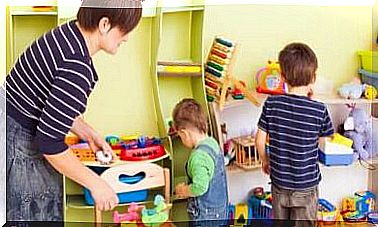Teach Your Child To Share With Other Children

To make the task of teaching our children to share with other children not impossible, we need to know some practical methods to get the message across.
It is essential to apply techniques to control anxiety and frustration. The goal is to make sure your child is not impatient when, for example, it’s his turn to wait.
We have to know that from the age of three, the child can consciously assume the act of sharing.
If you prefer to teach this value earlier, it is important to understand that it is not easy for her to understand what is hers and what is another child’s.
Clearly explaining the strengths of sharing is very important. The learning process can be facilitated with examples related to friends, schoolmates, etc.
Not everything in your hands belongs to you

The sense of ownership is difficult to deal with. That
because children tend to interpret an object or toy as theirs when they play with it for a long time.
In moments of confusion or non-conformities, it is appropriate to reinforce with the phrase “not everything that is in your hands belongs to you”.
We recommend encouraging relationships with other children. Thus, your child can learn to return the object of the other after playing.
Having the necessary empathy will help us understand our children’s feelings and facilitate the teaching process.
The idea is that he understands the concept and advantages of sharing without feeling pressured.
If he is forced or if the father or mother is hostile at this point, it is possible that negative results will be obtained.
Explaining through our actions how children can share with friends or family is one of the best learning tools you can use.
There are some basic ways to teach children to share. Below we will highlight some.
Teach to share: your child imitates your actions

- Sharing something they like (not necessarily a toy) can make them understand that the intention is to enjoy both.
-
Seeing the importance of sharing in different situations in everyday life at home will make your child adopt the same standards.
- We must provide moments for meeting friends. Thus, we can reinforce the sharing behavior and help to understand the importance of applying it at all times.
- It is necessary to use words that motivate you and congratulate you when you share something.
-
You shouldn’t be forced to share. On the contrary, it must always be a
negotiation
in which your child understands that he will also gain from it.
- Make him aware of how his friend feels when he doesn’t share. Including how he feels in cases where the opposite occurs. In this way, he will have the opportunity to experience the feeling of sadness or frustration he feels when the opposite happens.
- Define in advance which things are private and which are in common use. This can be applied in parks or public places so that it is clear what the objects of general use are.
-
the value of
respect
with our children is very important. So, we should avoid taking his toys away to please another child. Care must be taken, as the effect contrary to the initial intention can happen.
- Avoid making comparisons with other children. After all, it is a learning process in which not everyone learns at the same time. This does not mean that they are better or worse, just that they are unique.
Anyway, don’t forget:
Moms and Dads: We should not forget that teaching our children habits is not something that happens quickly or overnight.
These processes often take a lot of time and can discourage us.
We need to help raise happy children. Children who can grow up with values infused with love and not through force.
Remember that verbal repressions are imprinted on their minds and create aversion to what we are trying to teach.









